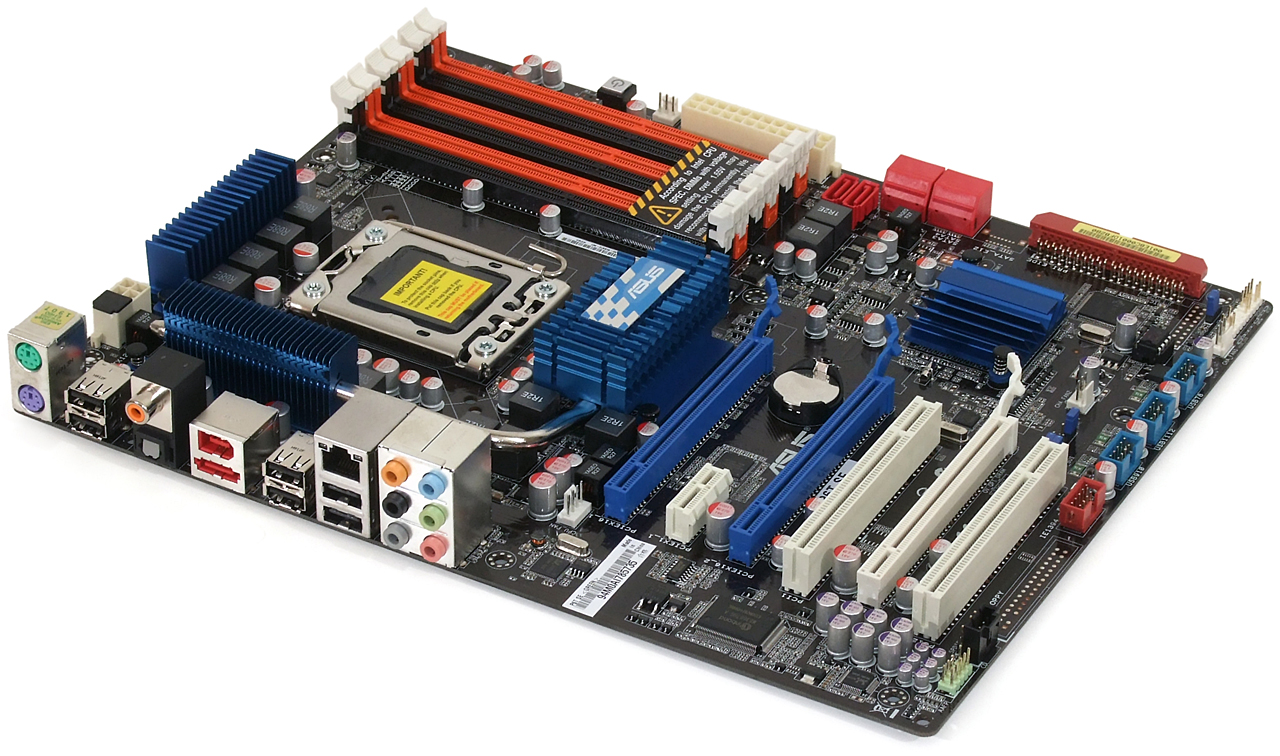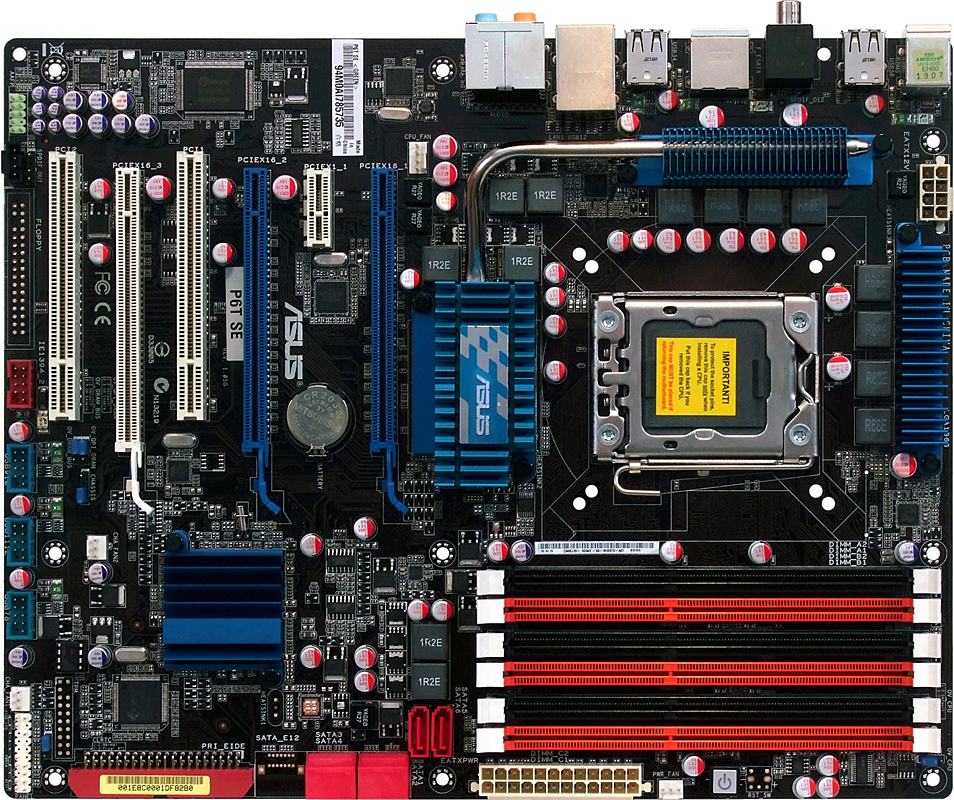X58 On A Budget: Seven Sub-$200 Core i7 Boards
Asus P6T SE
Using the same circuit board as the mid-range P6T, Asus’ P6T SE eliminates very few features but adds significant cost savings.
In fact, the only things we noticed missing were an SATA port multiplier (along with the two ports it supplied), the internal reset button (though the internal power button is still there), and the floppy connector. Of these, the eliminated floppy connector seems most questionable, since the floppy controller is still present as part of the multi-I/O interface IC.
Buyers still get the same good layout we praised in the P6T Review, and we still think the board could have been improved had Asus provided at least one more space between the two (blue) PCI Express 2.0 x16 slots. The white x16-length slot is still handicapped by x4 lane width, though it’s perfect for a lower-performance graphics card or high-bandwidth RAID controller.
One of our most frequent layout complaints concerns the traditional bottom-rear-corner placement of the P6T SE front-panel audio header, which can be extremely hard to reach with the cables of top-panel jacks. Several of Asus’ competitors have already broken away from this tradition.
Asus is one of the few companies to offer dual mounting patters for LGA 1366 and LGA 775 coolers. This could be a key value addition for anyone upgrading from LGA 775 while trying to keep their liquid-cooling kit intact.
BIOS
BIOS clock, timing, and voltage ranges can be found on Page 17’s overclocking comparison.
Get Tom's Hardware's best news and in-depth reviews, straight to your inbox.
Use of the same circuit board as the more-expensive P6T allows the P6T SE to also use the same BIOS, though Asus has updated it since our original P6T review.
Intel XMP Profile selection works exactly as expected on every Asus motherboard we’ve tested, and that’s something we can’t say about several of the firm’s competitors. Yet overclockers with even the least amount of experience can almost-as-easily set their memory voltage and timings manually.

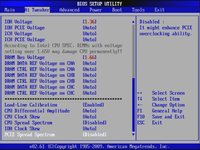
Voltage controls appear a little more meticulous than one might expect on a $200 X58 motherboard, but most of the added settings are little-used DRAM reference voltage levels. Extreme overclockers might appreciate these, but other component settings lack this level of detail.
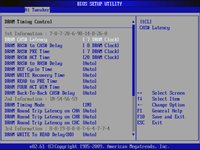
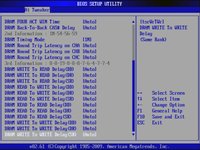
In the DRAM Timing Control menu we again see an unusual focus on memory performance. Fortunately, users can decide which timings to set manually while leaving others in automatic mode.
Asus EZ Flash 2 allows saving and flashing BIOS from within a special GUI, negating the need for bootable media. Opposite that level of usefulness is the automatically-enabled Express Gate function, which slows boot times without adding functionality. Neither the P6T SE nor the P6T upon which it’s based include an Express Gate module.

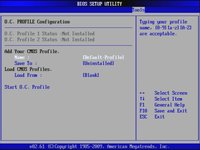
Two custom BIOS configurations can be stored as user profiles on the Asus P6T SE.
Accessories
The P6T SE includes no CrossFire or SLI bridges and comes with four SATA cables. NOTE: Asus has recently updated its P6T SE web page, removing references to SLI compatibility.
-
midnightgun If I am not mistaken, the reason the Asus P6T SE is so cheap is because it does not support SLI, only supports Crossfire. Is that not correct?Reply
-
Crashman Reply9477978 said:If I am not mistaken, the reason the Asus P6T SE is so cheap is because it does not support SLI, only supports Crossfire. Is that not correct?
At the time the review was written, the P6T SE web page read that it supported SLI. Perhaps Asus changed the web page following a complaint?
The big difference between the P6T SE and the P6T is the missing Jmicron SATA multiplier. By removing it, Asus killed the pathway that went to it, leaving the JMB363 controller with a "dead port". -
midnightgun Perhaps. I have had my eye on this board since I started planning my eventual upgrade to i7/i5 architecture (MSI and Gigabyte as well). I know on ncix's forums (canada's equivalent to newegg in the states) the P6T SE had been listed as only crossfire since at least mid May.Reply
-
Crashman midnightgunPerhaps. I have had my eye on this board since I started planning my eventual upgrade to i7/i5 architecture (MSI and Gigabyte as well). I know on ncix's forums (canada's equivalent to newegg in the states) the P6T SE had been listed as only crossfire since at least mid May.Reply
I never trust a seller as a source: Asus listed the P6T SE as having SLI support as little as four weeks ago, and now has a completely different page for it. They weren't the only company that advertised SLI capability and leave out the bridge, but it now appears the former P6T SE web page must have been an error, probably from the company copying its P6T page and editing it for the P6T SE, but missing one detail.
-
anamaniac Personally I will (atleast attempting to now) head straight for the Foxconn Bloodrage with a i7 920 and 3 ddr3 1333 sticks (and give them good timings, ignoring bandwidth and attempting a lower voltage) and a 4870 1gb (due to them being quite cheap now). =DReply
Though first on my priority list is a better monitor (and rent).
Neat article regardless. -
ceteras What an inspiring name for the Foxconn mainboard... looks like it's a corporate culture thing.Reply
I've skipped the Foxconn page, wouldn't buy from them anyway. -
Onus Interesting read. If I were going to build an i7 rig for myself, that ASRock would probably be my choice. I'm not thrilled about the VRM heating up so much, but I only do low-moderate overclocks so it ought to be ok. The feature set of that board looks suitable.Reply -
gxpbecker I am kinda surprised that the ECS board held its own against these "sronger" boards. From my past experieces ECS has been the walmart brand of mobos. :)Reply -
Ryun Question: Is the Asrock board able to go into S3 state/Standby mode? The one board I got from Asrock would not and after emailing their tech support they responded by saying that their boards do not support S3 state.Reply
